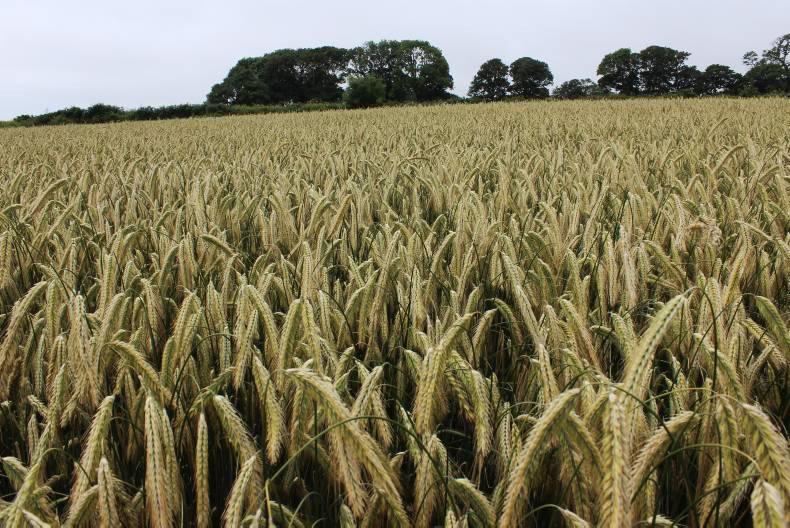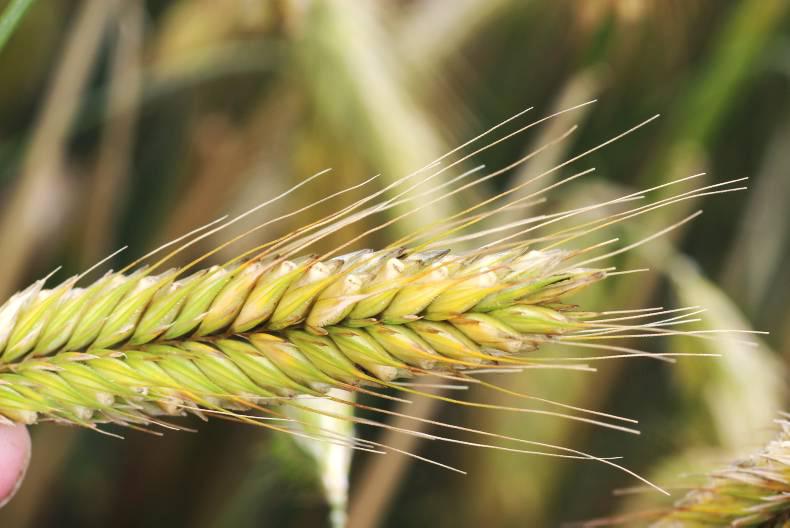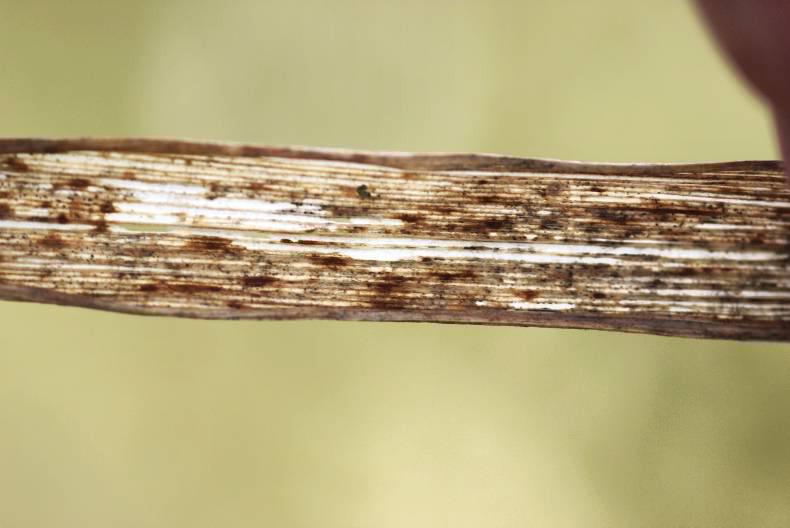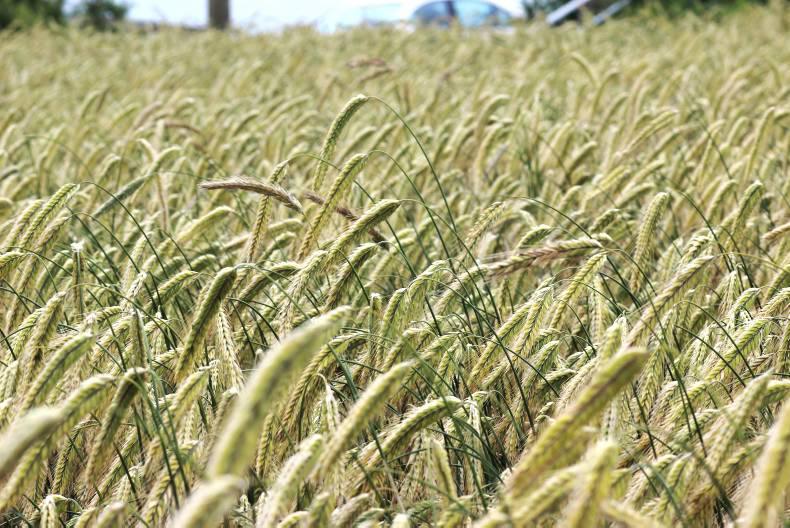Last week I wrote about catch crops and issues relating to the breeding of a number of species that we are less familiar with and the active choices needed for variety selection. This week I focus on a different crop that is new to our shores – hybrid rye.
A few weeks ago I went to see a commercial crop of hybrid rye which is being grown in Co Waterford by a dairy farmer, Colin Hartley. This crop of Magnifico was bred by KWS Seeds, which has continued with a breeding programme focused on energy crop production.
Technically, this new hybrid rye was bred for bulk for the production of biogas in anaerobic digestion plants in Britain rather than forage. However, ruminant customers there also became interested in the crop due to its yield and relative energy values. And, following these experiences, this Irish crop was destined for wholecrop silage.
I met with Colin when I visited the crop on 20 July, just before it was harvested. He takes a good bit of rented land, which he uses to grow a lot of his farm feeds. These normally include fodder beet and maize, but he still had to buy in straw. Colin finds the fodder beet very dependable, but maize is more variable on this land due to its exposure to the sea breeze. Another issue with maize, for him, is that it comes off relatively late, which prevents planting of a fodder crop on the same land over winter.
This crop of Magnifico hybrid rye stood perfectly and appeared to have good grain fill just prior to harvest

Colin thought about the option of growing triticale, but considered its yield to be a bit variable and lower (10-12t/acre) than the theoretical potential of the hybrid rye, so he opted for the rye on this occasion. The hybrid rye seed was supplied by Seedtech and Colin hoped that the crop should provide both grain and straw for his stock and, properly pitted, it should help provide essential energy and fibre.
Colin has grown many fodder crops over the years, and he is quite impressed with this one. It was planted by the sea at the end of October last about 2.4km south of Ring. It was planted at about 250 seeds/m2 and received nothing else until March, when it received granular lime.
Straw strength
Rye has always been associated with poorer land and dryer climates than ours. The consequence is that when it meets high fertility, and possibly high rainfall, its long straw is very prone to lodging. This was my initial concern, but these fields were standing straight as a die. So, questions with regard to husbandry became very relevant.
An ear of hybrid rye showing some of the grains inside in the glumes

Nitrogen was applied in three splits – 54 units/acre as 18:6:12 in early April plus a bag of CAN per acre on both 27 April and 21 May. So a total of 108 units/acre (135kg N/ha) on what was relatively worn ground certainly helped standing power. But this land was running a good rotation and had good soil fertility so it seemed an appropriate dressing, especially with maize in the rotation.
An application of Moddus (0.2 litre/ha) was applied in mid-April with the herbicide and this was followed by Terpal (1.0 litre/ha) in mid-May. These did a good job as the straw was quite stiff. This crop received a single fungicide, comprising Jenton plus Bravo, in mid-May.
As stated earlier, rye in Ireland generates fear of long straw and lodging. While the straw was quite long, it also seemed quite strong and springy. It had received a fair bit of heavy rain in the weeks previous but it was all standing perfectly. This may have been helped by the fact that all of the leaves were dead and drooping and so were not holding additional water in the canopy when it was raining.
Leaf death
Given the amount of green in the stems, I expected to see some level of life and green left on at least some of the leaves. But they were all dead and it struck me that there was a very significant amount of cereal leaf beetle damage on all of the leaves. The larvae of the beetle feed on the upper surface of the leaves, leaving the lower epidermis intact, as if it was a pane in a window. These symptoms are common in other cereals, but not at this level of damage. So is this crop just more susceptible to this potential pest?
All of the leaves had senesced prior to harvesting, but it looked like they had suffered substantial cereal leaf beetle damage

It is known that the crop is susceptible to brown rust but there was no indication that this had been a problem, or that it was responsible for the early leaf senescence. But, as is common with triticale, this hybrid rye was very visibly infected by ear blight.
Some of the hybrid rye ears had a lot of ear blight infection but this seemed to be much worse on the later tillers and may not have much yield significance

While this will not be a bad year for ear blight in most growers’ minds, this part of the country did have a lot of muggy weather in recent times. However, I would have thought that it would have been too late to cause serious damage on a winter crop.
Impressive spring growth
Colin told me he was very impressed with the way the crop grew, especially in spring. At the time when the nitrogen went on in April, growth in most crops was compromised, mainly by the cold conditions at that time. But the rye just powered on during this period and its hybrid vigour seemed to leave it indifferent to the lower growth temperatures.
The crop has since been harvested and it yielded an estimated 16.5t/acre of fresh weight over the 12 acres. I do not have a dry matter reading, but the grain was around 30-35% moisture on the day prior to cutting.
Colin will now plant 10 acres of Interval (a rape/kale hybrid) in this field for autumn fodder, leaving two acres of run back. Colin expects that this will be available for grazing from mid-October and he sees this additional feed as being an important knock-on benefit from having rye over maize.









SHARING OPTIONS